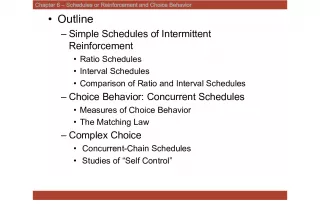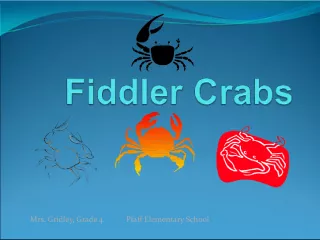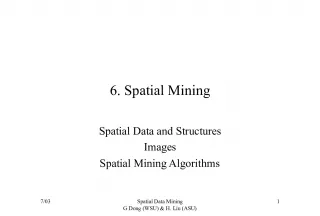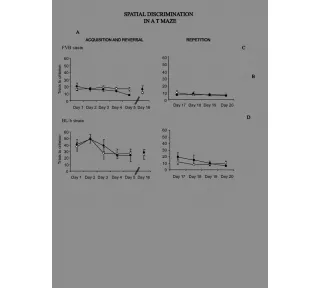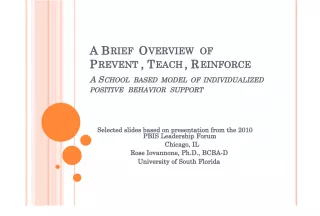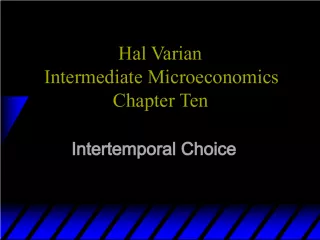Spatial Behavior and Habitat Choice of European Robins
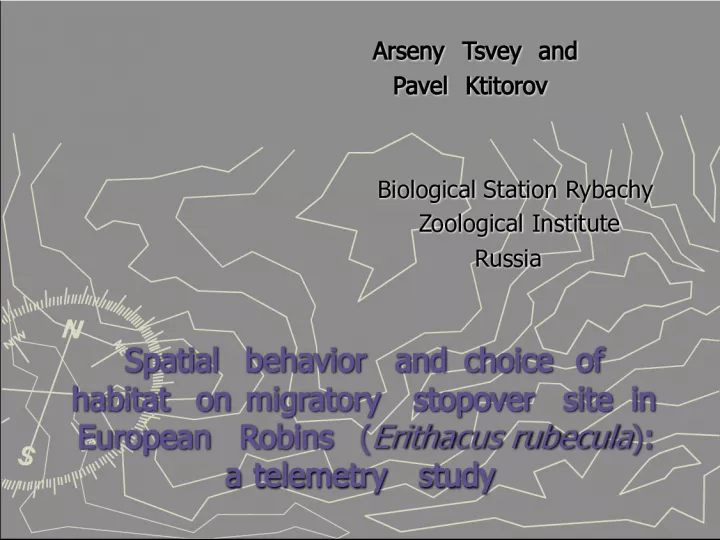

This telemetry study conducted by Arseny Tsvey and Pavel Ktitorov at the Biological Station Rybachy and Zoological Institute in Russia aims to evaluate the general pattern of spatial behavior and habitat use of Erithacus rubecula, with a focus on identifying differences between seasons and body condition.
- Uploaded on | 1 Views
-
 angusvan25
angusvan25
About Spatial Behavior and Habitat Choice of European Robins
PowerPoint presentation about 'Spatial Behavior and Habitat Choice of European Robins'. This presentation describes the topic on This telemetry study conducted by Arseny Tsvey and Pavel Ktitorov at the Biological Station Rybachy and Zoological Institute in Russia aims to evaluate the general pattern of spatial behavior and habitat use of Erithacus rubecula, with a focus on identifying differences between seasons and body condition.. The key topics included in this slideshow are European Robins, telemetry study, migration, spatial behavior, habitat choice, spring, autumn, body condition,. Download this presentation absolutely free.
Presentation Transcript
1. Spatial behavior and choice of habitat on migratory stopover site in European Robins ( Erithacus rubecula ) : a telemetry study Spatial behavior and choice of habitat on migratory stopover site in European Robins ( Erithacus rubecula ) : a telemetry study Arseny Tsvey and Arseny Tsvey and Pavel Ktitorov Pavel Ktitorov Biological Station Rybachy Biological Station Rybachy Zoological Institute Zoological Institute Russia Russia
2. Objectives of the study Objectives of the study Evaluation of general pattern of spatial behavior Evaluation of general pattern of spatial behavior Studying the possible difference in space use between spring and autumn, fat and lean individuals Studying the possible difference in space use between spring and autumn, fat and lean individuals Studying of habitat use in spring and in autumn Studying of habitat use in spring and in autumn
3. Asia Europe Atlantic ocean Africa Geographic position of the study plot Geographic position of the study plot Study plot Baltic sea Lithuania Courish spit (length 100km Width 400 3000 m) Courish gulf Russia
4. Autumn Autumn Spring Spring 20 20 13 13 Number of marked birds Robin with transmitter Robin with transmitter antenna Holohil Systems Ltd. Model: LB-2 Weight: 0.46g 0.5g Lifespan: up 21 days Transmitters:
5. Stopover duration of marked robins. Data for autumn and spring are pooled. Stopover duration of marked robins. Data for autumn and spring are pooled.
6. Examples of movement path during the first day of stopover Examples of movement path during the first day of stopover 100 m Capture/release site Baltic Sea Courish gulf N 951 m Autumn
7. Examples of movement path during the first day of stopover Examples of movement path during the first day of stopover 100 m Capture/release site Baltic Sea Courish gulf N 512 m Spring
8. Examples of movement path during the first day of stopover Examples of movement path during the first day of stopover 100 m Capture/release site Baltic Sea Courish gulf N Autumn 438 m
9. Typical features of spatial Typical features of spatial behavior during the first day of stopover behavior during the first day of stopover Stationary period after release
10. Typical features of spatial Typical features of spatial behavior during the first day of stopover behavior during the first day of stopover Active movement during part of the day and movement within temporary home range during the remaining time
11. Active movements and movements within a temporary home range Active movements and movements within a temporary home range 100 m Capture/release site Baltic Sea Courish gulf N Autumn Active movements Temporary home range
12. Active movements and movements within a temporary home range Active movements and movements within a temporary home range 100 m Capture/release site Baltic Sea Courish gulf N Spring Active movements Temporary home ranges
13. Active movements and movements within a temporary home range Active movements and movements within a temporary home range 100 m Capture/release site Baltic Sea Courish gulf N Autumn Active movements Temporary home range
14. Typical features of spatial Typical features of spatial behavior during the first day of stopover behavior during the first day of stopover Active movement during part of the day and movement within temporary home range during the remaining time
15. Total distance covered during the first day of stopover Total distance covered during the first day of stopover
16. Total distance covered during the first day of stopover Total distance covered during the first day of stopover
17. Orientation of movements during the first day of stopover Orientation of movements during the first day of stopover Autumn , <0.05 Spring, p>0.1
18. Spatial distribution of individual temporal home ranges (MCPs) during autumn 2004 Spatial distribution of individual temporal home ranges (MCPs) during autumn 2004 100 m Capture/release site Baltic Sea Courish gulf N
19. Spatial distribution of individual temporal home ranges (MCPs) during spring 2005 Spatial distribution of individual temporal home ranges (MCPs) during spring 2005 100 m Capture/release site Baltic Sea Courish gulf N
20. Size of temporary home range areas in spring and autumn and in lean and fat individuals Size of temporary home range areas in spring and autumn and in lean and fat individuals Lim: 2113 48795 m 2 Mean 14447 12942 m 2
21. Spatial behavior during the second and subsequent days of stopover Spatial behavior during the second and subsequent days of stopover Autumn Autumn Spring Spring 10 10 4 4 100 m Baltic Sea N Autumn Capture/release site An example of temporary range fidelity Stopover duration 6 days
22. Spatial behavior during the second and subsequent days of stopover Spatial behavior during the second and subsequent days of stopover Autumn Autumn Spring Spring 10 10 4 4 100 m Baltic Sea N Autumn Capture/release site An example of temporary range infidelity Stopover duration 2 days
23. Habitat types at the study area Habitat types at the study area Open dune Dune with shrubs Beach Grass Grass with shrubs Young pine forest Pine forest Deciduous forest Baltic Sea Courish gulf 1 km Pine forest Deciduous forest Open habitats
24. Distribution of individual home ranges (MSPs) within different habitat types in the study area. Distribution of individual home ranges (MSPs) within different habitat types in the study area. Open dune Dune with shrubs Beach Grass Grass with shrubs Young pine forest Pine forest Deciduous forest Baltic Sea Courish gulf 1 km Autumn MCPs
25. Distribution of individual home ranges (MSPs) within different habitat types in the study area. Distribution of individual home ranges (MSPs) within different habitat types in the study area. Open dune Dune with shrubs Beach Grass Grass with shrubs Young pine forest Pine forest Deciduous forest Baltic Sea Courish gulf 1 km Spring MCPs
26. Area of available habitats in spring and autumn Area of available habitats in spring and autumn Open dune Dune with shrubs Beach Grass Grass with shrubs Young pine forest Pine forest Deciduous forest Baltic Sea Courish gulf Spring Autumn
27. Results of compositional analysis of habitat preference in robins on migratory stopover Results of compositional analysis of habitat preference in robins on migratory stopover Lambda Lambda 0.87 0.87 2 2 1.71 1.71 p p 0.43 0.43 Random p Random p 0.53 0.53 Pine forest > deciduous forest > open habitats Pine forest > deciduous forest > open habitats >>> d enotes a significant difference between two consecutively ranked variables Lambda Lambda 0.61 0.61 2 2 9.84 9.84 p p 0.007 0.007 Random p Random p 0.007 0.007 deciduous forest > pine forest >>> open habitats deciduous forest > pine forest >>> open habitats >>> d enotes a significant difference between two consecutively ranked variables
28. Biomass of invertebrates during spring and autumn in two main habitat types Biomass of invertebrates during spring and autumn in two main habitat types deciduous coniferous deciduous coniferous
29. Correlates of robins behavior with invertebrates abundance Correlates of robins behavior with invertebrates abundance 1 1 The total distance of movement during the first day of stopover is shorter in autumn than in spring The total distance of movement during the first day of stopover is shorter in autumn than in spring The biomass of invertebrates is higher in autumn compared with spring The biomass of invertebrates is higher in autumn compared with spring 2 2 In spring the total distance of movements after landing decreases with the progress of season In spring the total distance of movements after landing decreases with the progress of season The biomass of invertebrates increases with the progress of spring season The biomass of invertebrates increases with the progress of spring season 3 There is no difference in use of the two main habitat types (humid deciduous forest and pine forest) There is no difference in biomass of invertebrates between the two main habitat types (humid deci- duous forest and pine forest)
30. Main conclusions Main conclusions Movements of European robins at day time stopovers after completing migratory flights are a specific behavior, not directly related to flights themselves. Movements of European robins at day time stopovers after completing migratory flights are a specific behavior, not directly related to flights themselves. The general pattern of movements of most robins during the first day of stopover includes active movement during a certain period of time, and then movements within one or two temporary home ranges. The general pattern of movements of most robins during the first day of stopover includes active movement during a certain period of time, and then movements within one or two temporary home ranges. Spatial behavior of robins is related to their energy status. Generally, fat birds are less mobile than lean ones. Spatial behavior of robins is related to their energy status. Generally, fat birds are less mobile than lean ones. Our results suggest that the general pattern of spatial behavior at stopovers depends on food abundance and availability Our results suggest that the general pattern of spatial behavior at stopovers depends on food abundance and availability
31. Thank you very much for your attention Acknowledgements: We are grateful to everybody who helped us with this study. Special thanks to: Casimir Bolshakov, Nicolai Poeplau, Maxim Dubinin, Jan Peyrat and Nikita Chernetsov
